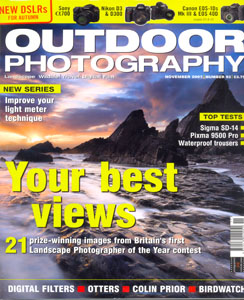After shooting lots of macros, I wanted to push the envelope and see if there was a way to get even closer to my subject (without the need for a microscope). Looking on the net, I found a photographer who did just that! Boy was I a happy camper. I have since been using this technique called “Super Macro” to take some pretty amazing photography.
Ok, before I get into the “how to”, let me first give you a brief explanation of what macro is. It’s basically close-up photography where the image projected on the camera sensor is relatively the same size as your subject. We give this term a ratio of 1:1. Most standard macro lenses give you up to 1:1 ratio. As for super macro, depending on your lens combination, you can usually get a ratio of 2:1 or greater. What this means is that your sensor sees closer than the human eye which leads to some unusual photography.
Equipment
Alright! Let’s look at what we need to achieve super macro photos.
A macro lens (ideally a prime lens)
A fast lens (ideally a prime lens with f1.8 or f1.4)
A step-down ring
A portable flash
A tripod
The reasons why I suggest prime lenses is that they’re the sharpest lenses and when you’re staking that much glass in front of your sensor, things then to go soft very fast. The step-down ring should match your lenses’ respective diameters.
There are other ways to setup for super macros, some using extension tubes or teleconverters, but I wanted to keep it simple.
Setup
Now, let’s make it work.
Step 1: Put the macro lens on the camera (in my case it’s the Sigma 105mm)
Step2 : Make sure your lens is on manual focus
Step 3 : Screw the step-down ring onto the macro lens
Step 4 : Turn the aperture dial on your fast lens (in my case it’s the Nikkor 50mm) to it’s widest setting (smallest f-stop #). We need as much light as possible getting in.
Step 5 : Screw the front of the fast lens onto the front of the macro lens.
Step 6 : Put your camera on manual focus
This is what the setup should look like.
The reason I added the tripod and the flash in the equipment list is that, since there isn’t a lot of light making it to the sensor, you’ll either need a long shutter speed or more light.
You’ll notice that your depth of field (DOF) is extremely small (roughly 1 or 2mm) so things get blurry very fast. Make sure your subject isn’t moving or else you’ll be out of focus. If you insist on doing this hand held, exhale before you press the trigger… you might get lucky.
Being so close and having such a small DOF is a great combination for fun abstract photography. Use you imagination and have fun!
As for the flash, you’ll have to trigger it off camera because of the length of the combined lenses and the proximity of the subject to the lenses.
Here are some samples images as examples.
Morning frost on my canoe.
Orange Hawkweed
Daisy



